About the Rebow Almshouses and Mary Ann Sanford
The building of the Almshouses in 1873
Frances Belsham
Prior to the introduction of the Old Age Pension Act of 1908, an elderly single or widowed woman had few options for financial support. Age, infirmity or suitable work for her skills, which are likely to be unskilled in the main, could prevent her from earning sufficient to support herself, and in the 1800s she may have had to look to the parish for support. If she was without an income she could also be without a home.
Wivenhoe, like every other parish in the area, had a number of people so reduced in circumstances that they became reliant on the Parish to support them and the Parish had a responsibility to support its poor residents. Relief to the poor could be administered in various ways. Out-relief was one option. The alternative could be the workhouse.
It is hard to fully understand what it was like for someone to be in such a dire situation that the only option is to go to the workhouse.
Many Victorians struggled to understand and explain poverty. There was at times an attitude of there being the deserving and undeserving poor and that poverty was a natural condition of the labouring poor.
Going into the workhouse would have been the last resort. For an elderly woman, there was probably very little chance that with continued ageing and possible infirmity she would leave the workhouse before her death.
This brings into sharp relief the legacy of Mary Ann Sanford who was responsible for the building of the almshouses in Rebow Road in 1873.
.
The Sanfords were a prominent and in many ways an influential family in Wivenhoe. Mary was one of 7 children. The family consisted of John, the eldest, followed by Deborah, Thomas and William who were twins. Sadly William died shortly after birth. Then came Benjamin, Mary Ann and lastly Kezia, the youngest of the family.
In 1847, Thomas Sanford financed the building of a new Congregational Chapel on the corner of West Street and Quay Street.
In the same year his brother John also financed the building of a school room which would provide education for up to 250 children. The school was built behind the new Congregational Church.
But it was Mary Ann Sanford who recognized the needs of older single women and widows of the parish.
At the end of the 19th century surveys carried out found that the main cause of poverty was low wages. The primary cause of extreme poverty was the loss of the main breadwinner. So for an elderly woman to lose a spouse was not only devastating in the emotional sense but was also a disaster economically.
In 1861, the Wivenhoe House Estate, having been bought by Thomas Harvey, was divided up into 80 building plots. One of the plots was acquired by John Eade a local builder. It can be assumed that this plot was then sold on to Mary Ann Sanford as this is where the Rebow Rd almshouses were built. It is also quite possible that the houses were built by John Eade.
Reportedly, by indenture dated 1872 (A History of the County of Essex. Vol. 10) Mary Ann transferred the land to trustees for the building of 6 almshouses for single women or widows preferably sailors widows.
She endowed the houses, called Mary Ann Sanford Almshouses with £102 a year for repair, upkeep, and stipends of 6s., the surplus to be used for general help to the poor.
During her lifetime she selected the occupants. When she died in Sept. 1873 she was buried in Wivenhoe old cemetery. The plot where she is buried is a box tomb that had become totally covered in ivy and brambles. When cleared, it showed that Mary Ann was buried in the same plot as her brothers, Thomas and John, her sister Kezia and Kezia’s husband William Hines.
The inscription under Mary Ann’s name states:
‘In loving memory of Mary Ann Sanford who died Sept 12th 1873 aged 81 years.
She having a strong desire to do some good to the aged widows in this parish during her life erected six almshouses and endowed the same with six shillings per week for each inmate at the cost of £5,000.‘
She also left in trust the sum of £500 the interest of the same to be used in the repairing of Wivenhoe Congregational Chapel which was built by her late brother Thomas Sanford Esq.
Kezia Hines, Mary Ann’s sister, by will proved 1885, gave £500 to the trustees of the almshouses to be used at their discretion.
It was after 1959 that the residents were expected to contribute to the ‘upkeep’ of the houses.
The houses, when they were built in 1873, were a little different to how they look now. From the front they appear to have changed very little; originally there was a high wall that enclosed the houses although this was made much lower when a trustee queried why the houses and tenants were enclosed.
When originally built, the houses didn’t have a bathroom and had an outside toilet. What is now a pleasant hall area which separates each pair of houses, and is accessed by a shared outer door, was once a corridor that ran between the houses. This has been used to extend each house to give a wet room and toilet, making each home much more comfortable and practical especially if the tenant has mobility difficulties.
Where there was once open fires, which would probably have heated only one room of the house, there is now central heating
The properties are now managed by the Wivenhoe Housing Trust, which incorporates the Mary Ann Sanford Charity, and residents continue to be allocated a property on the basis of individual needs. (Note: For more information about the Wivenhoe Housing Trust and the Jonathan Feedham Charity and how to contact them – Click here)
Linked pages:
- About The Opening Ceremony in 1873
- About the Sanford family and their legacy
- About Anna Maria Turner – one of the first almshouse residents
- About Mary Ann Cole – one of the first almshouse residents
- About Mary Ann Turner – one of the first almshouse residents
- About Sarah Ann Eaton – one of the first almshouse residents
- Mary Ann Howling ; an early resident of the Mary Ann Sanford almshouses
- William Sanford b. 1749 -1830

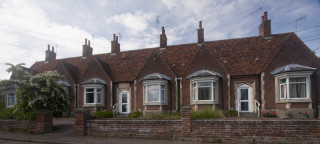
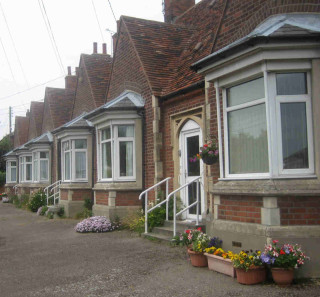
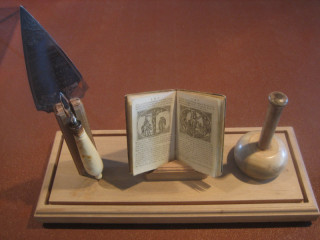
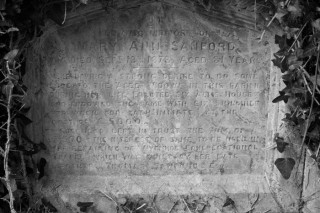
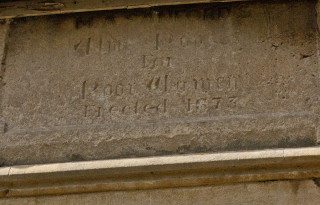





Comments about this page
Do you know where the William Sanford journal is now? It should be transcribed and made available I think.
Dear Andrew. By coincidence, two of our Group went to the ERO recently in search of William’s journal only to be told that the owner of it had withdrawn it from the ERO. We are now trying to find the identity of the owner to see if we would be allowed to make a copy of it.
Peter Hill
This is really interesting research Frances. I knew nothing about the Sanford family before I read your articles here. I intend to look for the tomb in the old cemetery but may need to ask you where to look! Thanks very much!
Bridget. It is not easy to find. Take the left hand path down the Old Cemetery and you will find it rather buried in amongst the ivy and other undergrowth on the right hand side of that path.
Peter Hill
Very interesting article on the alms houses and particularly to see a single woman in that era and her influence on her community. Fab!
Glad you appreciated this research and the work which went into it. The person who is responsible, Frances, is working on publishing more information about the Sanford family and the first residents who lived at these almshouses. So suggest you might want to keep a watch out for more research.
Best
Peter
Add a comment about this page